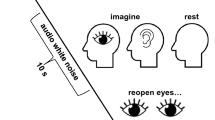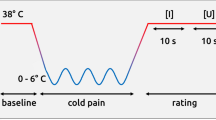Abstract
Changes in bodily states, particularly those mediated by the autonomic nervous system, are crucial to ongoing emotional experience. A theoretical model proposes a first-order autoregulatory representation of bodily state at the level of dorsal pons, and a second-order experience-dependent re-mapping of changes in bodily state within structures such as cingulate and medial parietal cortices. We tested these anatomical predictions using positron emission tomography and a human neurological model (pure autonomic failure), in which peripheral autonomic denervation prevents the emergence of autonomic responses. Compared to controls, we observed task-independent differences in activity of dorsal pons and context-induced differences in cingulate and medial parietal activity in PAF patients. An absence of afferent feedback concerning autonomically generated bodily states was associated with subtle impairments of emotional responses in PAF patients. Our findings provide empirical support for a theory proposing a hierarchical representation of bodily states.
This is a preview of subscription content, access via your institution
Access options
Subscribe to this journal
Receive 12 print issues and online access
$209.00 per year
only $17.42 per issue
Buy this article
- Purchase on Springer Link
- Instant access to full article PDF
Prices may be subject to local taxes which are calculated during checkout



Similar content being viewed by others
References
James, W. Physical basis of emotion. Psychol . Rev. 101, 205–210 (1994).
Damasio, A. R. Descartes' Error: Emotion, Reason and the Human Brain (Grosset/Putnam, New York, 1994).
Bechara, A., Damasio, H., Tranel, D. & Damasio, A. R. Deciding advantageously before knowing the advantageous strategy. Science 275, 1293–1295 (1997).
Cahill, L. The neurobiology of emotionally influenced memory. Implications for understanding traumatic memory. Ann. NY Acad. Sci. 821, 238–246 (1997).
Damasio, A. R. The Feeling of What Happens: Body and Emotion in the Making of Consciousness (Harcourt Brace, New York, 1999).
Mathias, C. J. in Neurology in Clinical Practice (eds. Bradley, W. G., Daroff, R. B., Fenichel, G. M. & Marsden, C. D.) 2131–2165 (Butterworth-Heinemann, Woburn, Massachusetts, 2000).
Mathias, C. J. & Bannister, R. in Autonomic Failure: A Textbook of Clinical Disorders of the Autonomic Nervous System 4th edn. (eds. Mathias C. J. & Bannister, R.) 169–195 (Oxford Univ. Press, Oxford, 1999).
Mathias, C. J., Mallipeddi, R. & Bleasdale-Barr, K. Symptoms associated with orthostatic hypotension in pure autonomic failure and multiple system atrophy. J. Neurol. 246, 893–898 (1999).
Magnifico, F., Misra, V. P., Murray, N. M. & Mathias, C. J. The sympathetic skin response in peripheral autonomic failure—evaluation in pure failure pure cholinergic dysautonomia and dopamine-beta-hydroxylase deficiency. Clin. Auton. Res. 8, 133–138 (1998).
Clark, C. V. & Ewing, D. J. Ocular autonomic function in progressive autonomic failure. Doc. Ophthalmol. 70, 309–321 (1988).
Matthews, M. in Autonomic Failure: A Textbook of Clinical Disorders of the Autonomic Nervous System 4th edn. (eds. Mathias C. J. & Bannister, R.) 169–195 (Oxford Univ. Press, Oxford, 1999).
Kimber, J. R., Watson, L. & Mathias, C. J. Distinction of idiopathic Parkinson's disease from multiple-system atrophy by stimulation of growth-hormone release with clonidine. Lancet 349, 1877–1881 (1997).
Colebatch, J. G., Deiber, M. P., Passingham, R. E., Friston, K. J. & Frackowiak, R. S. Regional cerebral blood flow during voluntary arm and hand movements in human subjects. J. Neurophysiol. 65, 1392–1401 (1991).
Paulesu, E., Frith, C. D. & Frackowiak, R. S. The neural correlates of the verbal component of working memory. Nature 362, 342–345 (1993).
Critchley, H. D., Corfield, D. R., Chandler, M. P., Mathias, C. J. & Dolan, R. J. Cerebral correlates of autonomic cardiovascular arousal: A functional neuroimaging investigation. J. Physiol. (Lond.) 523, 259–270 (2000).
Price, C. J. & Friston, K. J. Cognitive conjunction: a new approach to brain activation experiments. Neuroimage 5, 261–270 (1997).
Friston, K. J., Holmes, A. P., Price, C. J., Buchel, C. & Worsley, K. J. Multisubject fMRI studies and conjunction analyses. Neuroimage 10, 385–396 (1999).
Katz, S., Ford, A. B., Moskowitz, R. W., Jackson, B. A. & Jaffe, M. W. Studies of illness in the aged. The Index of ADL: a standardized measure of biological and psychosocial function. JAMA 185, 914–919 (1963).
Hamilton, M. Diagnosis and rating of anxiety. Br. J. Psychiatry, Special Publication No. 3, 76–79 (1969).
Xi, M. C., Morales, F. R. & Chase, M. H. Evidence that wakefulness and REM sleep are controlled by a GABAergic pontine mechanism. J. Neurophysiol. 82, 2015–2019 (1999).
Spyer, K. M. in Autonomic Failure: A Textbook of Clinical Disorders of the Autonomic Nervous System 4th edn. (eds. Mathias C. J. & Bannister, R.) 45–55 (Oxford Univ. Press, Oxford 1999).
Chamberlin, N. L. & Saper, C. B. Topographic organization of cardiovascular responses to electrical and glutamate microstimulation of the parabrachial nucleus in the rat. J. Comp. Neurol. 326, 245–262 (1992).
Saleh, T. M., Bauce, L. G. & Pittman, Q. J. Glutamate release in parabrachial nucleus and baroreflex alterations after vagal afferent activation. Am. J. Physiol. 272, R1631–R1640 (1997).
van der Plas, J., Maes, F. W. & Bohus, B. Electrophysiological analysis of midbrain periaqueductal gray influence on cardiovascular neurons in the ventrolateral medulla oblongata. Brain Res. Bull. 38, 447–456 (1995).
Cechetto, D. F. & Saper, C. B. Evidence for a viscerotopic sensory representation in the cortex and thalamus in the rat. J. Comp. Neurol. 262, 27–45 (1987).
Craig, A. D., Chen, K., Bandy, D. & Reiman, E. M. Thermosensory activiation of insula cortex. Nat. Neurosci. 3, 184–190 (2000).
Adolphs, R. et al. A role for somatosensory cortices in the visual recognition of emotion as revealed by three dimensional lesion mapping. J. Neurosci. 20, 2683–2690 (2000).
Critchley, H. D., Elliott, R., Mathias, C. J. & Dolan, R. J. Neural activity relating to the generation and representation of galvanic skin conductance response: a functional magnetic imaging study. J. Neurosci. 20, 3033–3040 (2000).
Devinsky, O., Morrell, M. J. & Vogt, B. A. Contributions of anterior cingulate cortex to behaviour. Brain 118, 279–306 (1995).
Vogt, B. A., Finch, D. M. & Olson, C. R. Functional heterogeneity in cingulate cortex: the anterior executive and posterior evaluative regions. Cereb. Cortex 6, 435–443 (1992).
Cohen, R. A., Kaplan, R. F., Moser, D. J., Jenkins, M. A. & Wilkinson, H. Impairments of attention after cingulotomy. Neurology 53, 819–824 (1999).
Lane, R. D., Fink, G. R., Chau, P. M. & Dolan, R. J. Neural activation during selective attention to subjective emotional responses. Neuroreport 8, 3969–3972 (1997).
Collet, C., Vernet-Maury, E., Delhomme, G. & Dittmar, A. Autonomic nervous system response patterns specificity to basic emotions. J. Auton. Nerv. Syst. 62, 45–57 (1997).
Bouscein, W. Electrodermal Activity (Plenum, New York, 1992).
Friston, K. et al. Statistical parametric maps in functional imaging: a general linear approach. Hum. Brain Mapp. 2, 189–210 (1995).
Friston, K. et al. Spatial registration and normalization of images. Hum. Brain Mapp. 2, 165–189 (1995).
Talairach, J. & Tournoux, P. Co-planar Stereotaxic Atlas of the Human Brain (Theime, Stuttgart, Germany, 1988).
Damasio, A. R. et al. Subcortical and cortical brain activity during the feeling of self-generated emotions. Nat. Neurosci. 10, 1049–1056 (2000).
Acknowledgements
This work was supported by a Programme Grant to R.J.D. from the Wellcome Trust. H.D.C. is supported by a Clinical Research Fellowship from the Brain Research Trust.
Author information
Authors and Affiliations
Corresponding author
Rights and permissions
About this article
Cite this article
Critchley, H., Mathias, C. & Dolan, R. Neuroanatomical basis for first- and second-order representations of bodily states. Nat Neurosci 4, 207–212 (2001). https://doi.org/10.1038/84048
Received:
Accepted:
Issue Date:
DOI: https://doi.org/10.1038/84048
This article is cited by
-
Parieto-occipital ERP indicators of gut mechanosensation in humans
Nature Communications (2023)
-
Brain 5-HT2A receptor binding and its neural network related to behavioral inhibition system
Brain Imaging and Behavior (2022)
-
Complex regional pain syndrome: a focus on the autonomic nervous system
Clinical Autonomic Research (2019)
-
Changes in brain metabolic connectivity underlie autistic-like social deficits in a rat model of autism spectrum disorder
Scientific Reports (2017)
-
Low-frequency fluctuation amplitude analysis of resting-state fMRI for functional brain response differences between acupuncture and moxibustion at Zusanli (ST 36) in patient with functional dyspepsia
Journal of Acupuncture and Tuina Science (2017)



